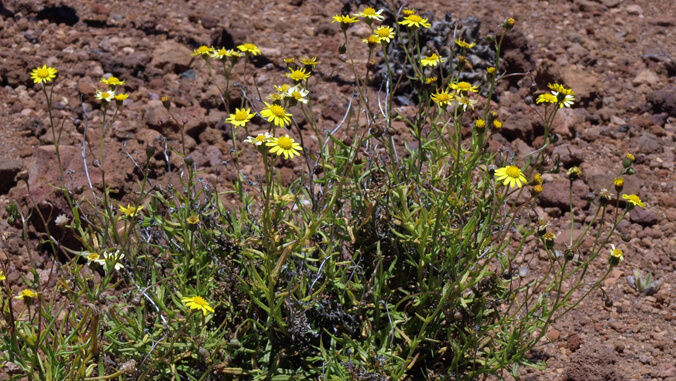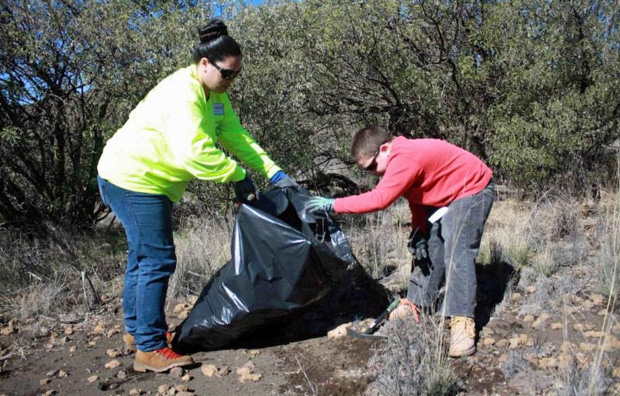
After a two-year pandemic pause, the University of Hawaiʻi at Hilo Center for Maunakea Stewardship (CMS) will host a second Mālama Maunakea volunteer weed pull this month as part of an extended Earth Day celebration. Volunteers are needed for the Saturday, April 23, and the invasive-weed pull starts at 9 a.m. at the Visitor Information Station on Maunakea.

The Mālama Maunakea volunteer weed pulls are part of ongoing CMS efforts to protect the resources on the mountain by helping to control fireweed (Senecio madagascariensis) and other invasive plant species around Maunakea’s 9,000-foot elevation. Eradicating invasive species and weeds helps to reduce habitat for invasive ants, prevents unwanted invasive species from being transported to the upper elevation areas of Maunakea, and prepares the surrounding area for future native plant restoration projects.
- Related UH News story: Native plant restoration efforts progressing on Maunakea, May 11, 2021
Organizing invasive species weed pulls since 2012
The Mālama Maunakea campaign connects community volunteers to help in resource management and stewardship of the Maunakea Science Reserve, and mid-level support facilities at Halepōhaku. Since its launch in 2012, the Mālama Maunakea campaign has organized 60 separate weed pulls with more than 1,500 community volunteers, more than 10,000 volunteer hours, and more than 2,400 garbage bags of weeds pulled. CMS has also planted more than 300 native plants near Halepōhaku.
Earlier this month, CMS restarted the campaign with 14 volunteers and 3 staff members pulling 440 pounds of invasive weeds.
Volunteers are encouraged to bring the following:
- Water in a reusable container
- Sun protection (sunglasses, sunscreen, hat)
- Layers to protect from wind or wet and cool weather are recommended (light rain gear, warm clothing long-sleeve shirt)
- Hiking boots or good walking shoes
- Long pants
- Garden or work gloves that are clean and free of invasive species
Work will be done at the 9,000-foot elevation, near the VIS. Lunch will be provided. Register online.

